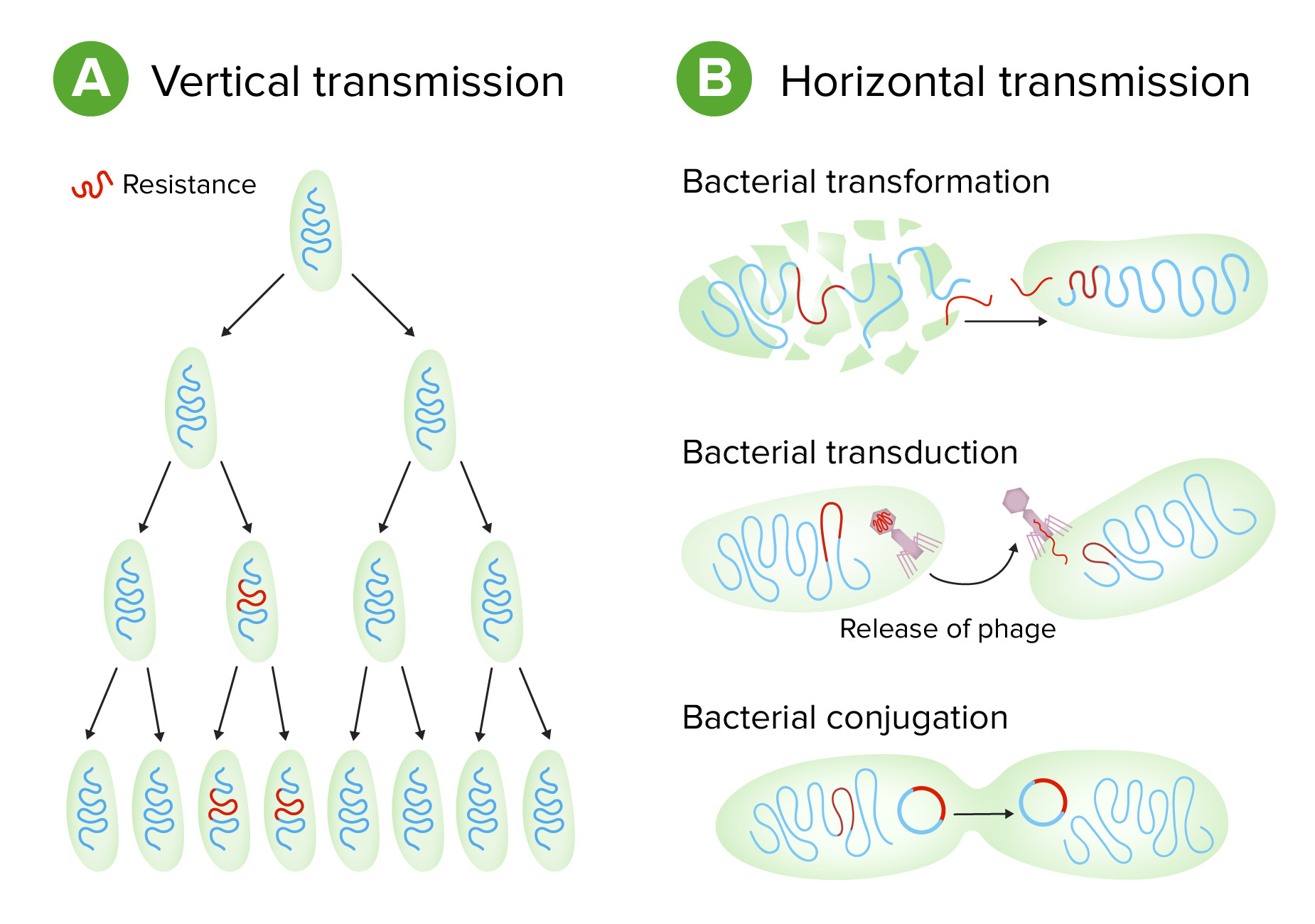Playlist
Show Playlist
Hide Playlist
Exotoxins and Endotoxins
-
Slides Pathogenic Pathways in Infectious Disease.pdf
-
Reference List Pathology.pdf
-
Download Lecture Overview
00:01 So, we've talked about all the first five bullet points. 00:05 I want to talk now about the last bullet point, which is, “Exotoxins and Endotoxins.” What are those in terms of injury? And what's being shown on the screen there, is, “Group A streptococcus” with (scarlet fever), the rash, the injury there, is due to the release of an exotoxin. 00:25 I’m going to talk about another one here, I’m talking about, cholera. 00:28 So, cholera is a non-invasive microorganism, it is fecally, orally transmitted and kills, because it causes a profound watery diarrhea and basically, the poor affected individual dies of dehydration. 00:43 So, how does cholera do this? Well, it makes an exotoxin, the exotoxin is actually important for the cholera to get transmitted to its next host obviously, if you've infected it, a host, and they are defecating all over the place because they have intractable diarrhea, you're going to have a much better chance of being transmitted to your next host, so, it's part of what the bug wants to do, in terms of its transmission, but for the patient, let's look at what happens here. 01:11 So, cholera toxin is composed of an "A" toxic subunit and a whole bunch of little "B" subunits, that are important for binding, the B subunits are the smaller balls there at the bottom. 01:22 It binds, releases toxin A into the cell and that toxin A, will end up, using, nicotine adenine dinucleotide the NAD, to ADP ribosylate G-protein, okay. 01:37 The exact names here are not all that important, but this is going to be an important step, in that it's now going to lead to permanent activation of, "Adenylate cyclase." That intracellular enzyme, adenylate cyclase, is going to be something that's going to increase intracellular cyclic AMP and when we increase intracellular cyclic AMP, as shown here on the final slide, we turn off sodium and chloride absorption and turn on, impressive, chloride and bicarbonate secretion, and that's where that voluminous watery diarrhea comes from and that's the killer. 02:16 But this is not invasive, but it caused lethal injury, potentially lethal injury, by virtue of the secretion of the exotoxin. 02:23 Let's do one other one, so endotoxin. 02:28 Endotoxin, will cause injury by over activating the immune system. 02:34 Really? Yeah, well that's what septic shock is all about. 02:38 So, endotoxin is a component of the gram-negative bacteria cell wall, it's normally present there. 02:45 It turns out that gram-positive cocci, that's what the GPC is and fungi have similar molecules, that can induce an endotoxin-like result. 02:55 What is endotoxin? It's a component of the cell wall, yeah, I got that. 02:59 Okay, what is it really made of? So, there is a, “carbohydrate O” component, that's the green boxes up above, that's unique to every particular bacteria, every gram-negative bacteria, but there is a common “lipid A” component, that's attached to that carbohydrate that polysaccharide, that does all the devilish action that we're going to be talking about. 03:24 And what it does, is that, it activates macrophages, that, “lipid A” component of the lipopolysaccharide or LPS activates macrophages. 03:35 How is this happening? So, what's happening is that, LPS on the bacterial cell wall or as bacteria being destroyed, the LPS, will bind to LPS binding protein, this is a normal protein, synthesized in the liver, circulates around the body and is responsible for sopping up lipopolysaccharide and saying, “Oh we have a potential infection,” so, that's what that ball is at the top, LBP is LPS binding protein and the little wedge is lipopolysaccharide. 04:07 That complex will then bind to CD14 on the cell surfaces, of macrophage monocyte population, as well as other cell types, such as, endothelium and then we'll co-activate or transactivate a toll-like receptor “TLR4,” that's got a various adapter proteins that's associated with it and we'll get intracellular signaling. 04:31 So, by having the binding of the LPS-LBP complex to CD14 and the toll-like receptor, we now will make an inactive kinase, active, we will phosphorylate a variety of intracellular proteins. 04:47 Keep in mind that, locally this is a good thing, we want to turn on the macrophages, so they go after a particular bacteria and do the right thing. 04:55 Okay, so we've gotten to the stage now, where we're phosphorylating all those proteins, we will, eventually through a phosphorylation cascade, get a transcription factor phosphorylated, that goes into the nucleus of the cell, macrophages and endothelial cells and we'll get transcription of new, inflammatory mediators.
About the Lecture
The lecture Exotoxins and Endotoxins by Richard Mitchell, MD, PhD is from the course Host–pathogen Interaction.
Included Quiz Questions
Cholera exotoxin A permanently activates which enzyme?
- Adenylate cyclase
- Phospholipase C
- Reverse transcriptase
- Hexokinase
- Ribonuclease
Endotoxin is a component of what pathogen?
- Gram-negative bacteria
- Fungi
- Viruses
- Gram-positive bacteria
- Parasites
Endotoxin activates macrophages through which mechanism?
- Binding to toll-like receptors
- Inhibition of phagocytosis
- Activation of phagocytosis
- Stimulation of apoptosis
- Inhibition of release of proinflammatory cytokines
Customer reviews
5,0 of 5 stars
| 5 Stars |
|
5 |
| 4 Stars |
|
0 |
| 3 Stars |
|
0 |
| 2 Stars |
|
0 |
| 1 Star |
|
0 |




